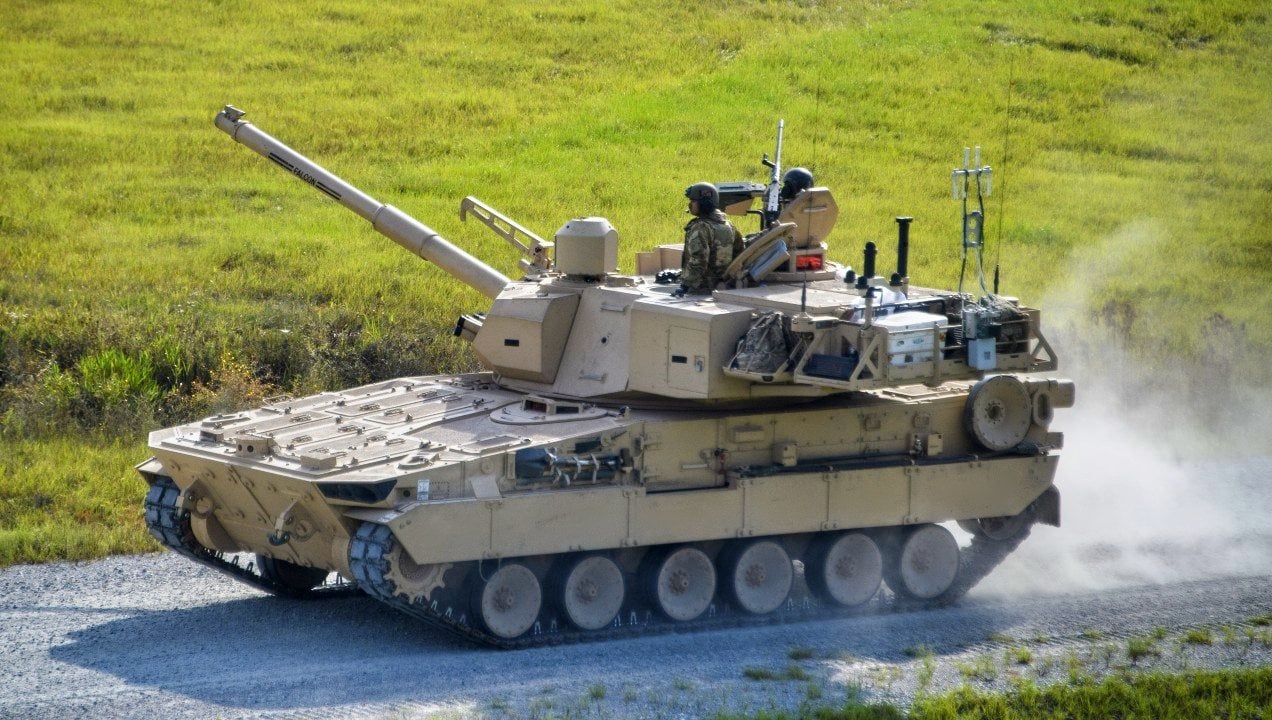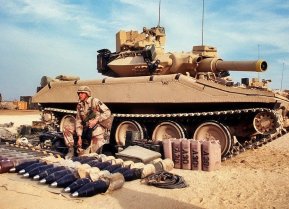M10 Booker Combat Vehicle: The 'Light Tank' the U.S. Army Needs
The M10 Booker combat vehicle is equipped with a 105mm M35 gun, a 0.50 caliber heavy machine gun, and a 7.62mm light machine gun. It weighs around 40 tons, can reach speeds of up to 45 miles per hour, and has an operational range of about 350 miles.
With the prospect of large-scale ground combat back on the menu, the Army is modernizing its arsenal.
As part of this modernization process, the Army is adding the M10 Booker Combat Vehicle to its arsenal. Resembling a light tank, the M10 Booker will add firepower and maneuverability to the Army’s mechanized brigades.
The M10 Booker, What We Know Right Now
The combat vehicle is equipped with a 105mm M35 gun, a 0.50 caliber heavy machine gun, and a 7.62mm light machine gun. It weighs around 40 tons, can reach speeds of up to 45 miles per hour, and has an operational range of about 350 miles.
The M10 Booker has a crew of four soldiers and includes advanced thermal sensors for night and urban combat. As with many other systems under development, it has a modular design that can easily take capability upgrades.
The M10 Booker combat vehicle is an armored vehicle intended to support mechanized infantry brigades by suppressing and destroying enemy fortifications and entrenchments. In addition, the M10 Booker will be able to take out light enemy armored vehicles.
The Army states that the M10 Booker Combat Vehicle will bring a new level of lethality and protection to mechanized infantry, allowing troops to gain and maintain speed and momentum on the battlefield.
Achieving tempo in combat is key because it thwarts the enemy’s plans and forces him to adjust his approach to your efforts.
For example, had the Ukrainians been able to achieve a string of tactical successes during their counteroffensive in the summer, they could have likely achieved an operational breakthrough. But to gain and maintain momentum, you need both the right weapon systems and the proper training and tactics.
“Our Soldiers will now have an infantry assault vehicle in a protected sense with decisive lethality to destroy the threats that took the lives of these two incredible Soldiers,” Doug Bush, the Assistant Secretary of the Army for Acquisition, Logistics and Technology, said in a press release.
The M10 Booker is part of a large-scale modernization program for the Army. In 2023 alone, Army troops received 24 new systems, including the M10 Booker. The war in Ukraine has given the military a lot to think about.
It is, after all, the largest conventional conflict on European soil since the end of World War Two. Drones, for example, are everywhere, and they have influenced the tactics of the combatants. In addition, tank combat between Western and Russian main battle tanks has shown what works and what doesn’t on the modern battlefield.
General Dynamics has a contract to deliver around 30 vehicles, but the Army has the option to purchase 70 more during the initial production phase.
The combat vehicle is named after two enlisted Army troops: Private Robert D. Booker, who won the Medal of Honor during World War Two, and Staff Sergeant Stevon A. Booker, who earned the Distinguished Service Cross in Operation Iraqi Freedom. Both men died in action.
“The M10 Booker Combat Vehicle is named in [their] honor because it will accomplish what they both did – enabling squads to continue pushing forward through heavy machine-gun fire while protecting our most important weapon system: our Soldiers,” Army Chief of Staff Gen. James McConville said during the naming ceremony.

The M10 Booker is the first vehicle to be, at least partly, named after a soldier who fought in a post-9/11 conflict.
About the Author
Stavros Atlamazoglou is a seasoned defense journalist specializing in special operations and a Hellenic Army veteran (national service with the 575th Marine Battalion and Army HQ). He holds a BA from Johns Hopkins University and an MA from the Johns Hopkins School of Advanced International Studies (SAIS). His work has been featured in Business Insider, Sandboxx, and SOFREP. Email the author: [email protected].


